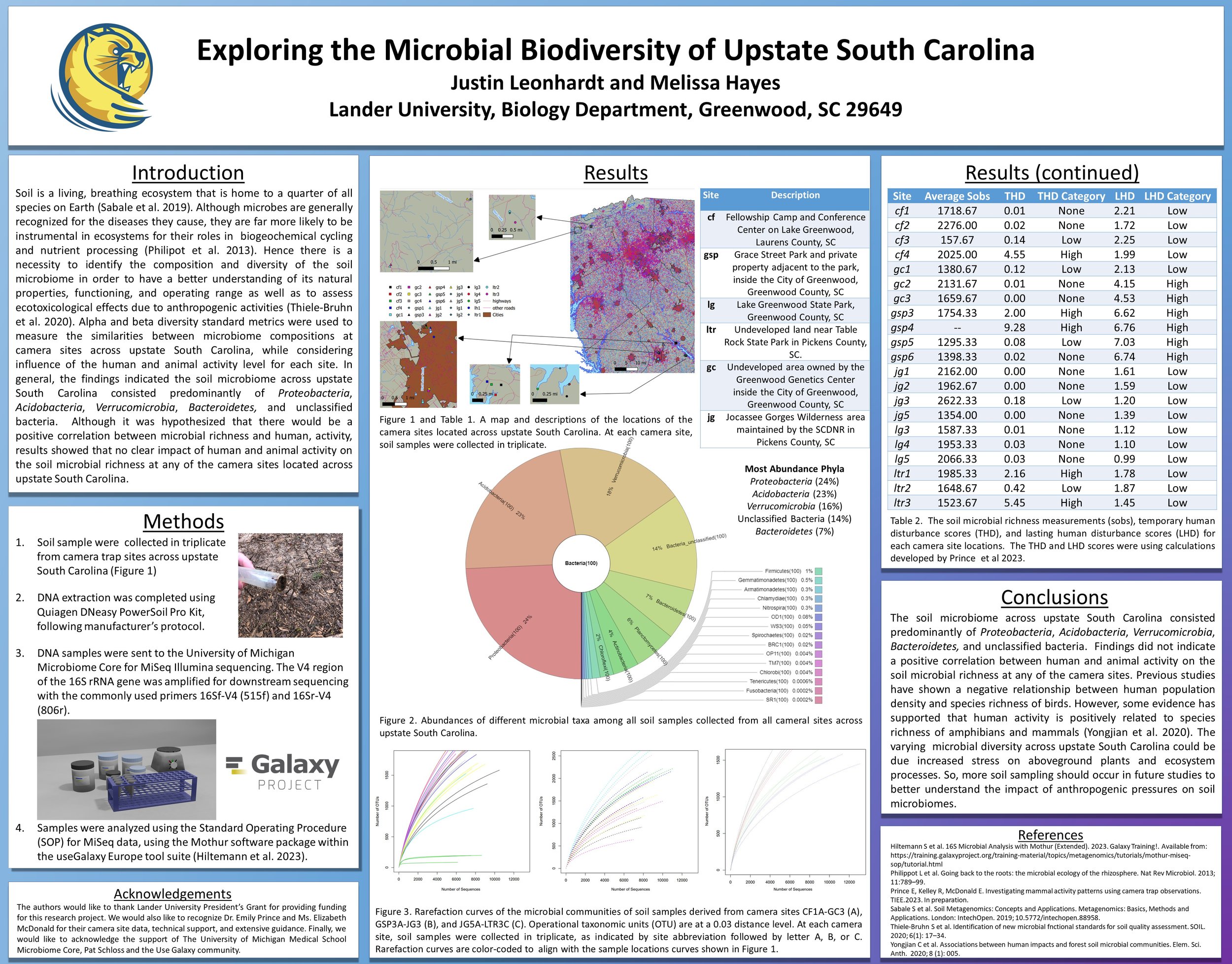Exploring the Microbial Biodiversity of Upstate South Carolina
Justin Leonhardt and Melissa Hayes
Even though soil microbes dominate the biosphere, we lack knowledge about how these microscopic communities are changing due to encroaching human and animal activities. For this study, soil samples will be taken throughout upstate South Carolina at established camera trap sites. DNA was extracted from 0.25g of each soil sample using Quiagen DNeasy PowerSoil Pro Kit following the standard manufacturer's protocol. Concentrations of extracted DNA were assessed using a Nanodrop spectrophotometer to ensure successful DNA extraction. DNA samples were sent to University of Michigan Medical School’s Microbiome Core for library preparation and MiSeq high-throughput sequencing. The V4 region of the 16S rRNA gene was amplified for downstream sequencing with the commonly used primers 16Sf-V4 (515f) and 16Sr-V4 (806r). Acquired DNA sequences were filtered for quality and analyzed using MOTHUR v 1.48.0 following the MiSeq SOP with modifications. Alpha and beta diversity standard metrics were used to measure the similarities between microbiome structures and compositions, while considering the human and animal activity level for the soil sample results for all of camera sites. Results have provided insights into the impact of animal and human disturbances on soil microbiomes at selected sites throughout upstate South Carolina. Understanding the composition and structure of the natural, soil microbiome may help expand the scientific knowledge of mammalian and microbial community ecology and provide site owners with useful information about the wildlife and soil health on their land.
Justin Leonhardt is currently a senior biology major with genetics emphasis and minors in chemistry and psychology. He is a member of the Lander University of Honors College and the secretary for Lander's Psi Theta chapter of the TriBeta National Biological Honor Society. He plans on going to graduate school after Lander, pursuing a Ph.D. in genetics.
